
Joya L. Nath is a 9-year old Swarthmore resident, 3rd grader, and aspiring artist. She has been taking art lessons from local artist Rinal Parikh for the last year. Joya also enjoys tennis, cooking, piano and using her imagination.
Philadelphia Stories: Publishing Local Writers & Artists

Joya L. Nath is a 9-year old Swarthmore resident, 3rd grader, and aspiring artist. She has been taking art lessons from local artist Rinal Parikh for the last year. Joya also enjoys tennis, cooking, piano and using her imagination.
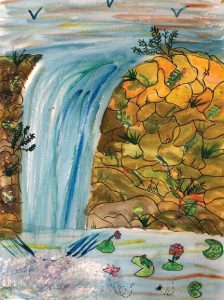
Joya L. Nath is a 9-year old Swarthmore resident, 3rd grader, and aspiring artist. She has been taking art lessons from local artist Rinal Parikh for the last year. Joya also enjoys tennis, cooking, piano and using her imagination.
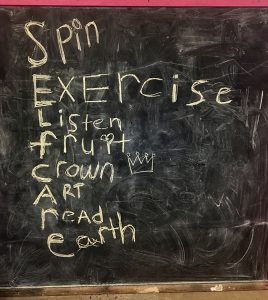
Nassera and Kimorah are proud Mighty Writers.
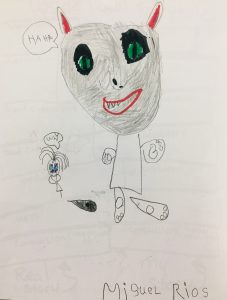
Miguel Rios is a proud Mighty Writer.
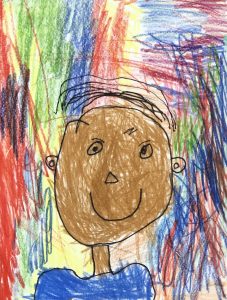
Neel Parikh is 5 years old and goes to kindergarten at Swarthmore-Rutledge School. He loves painting with his mom and playing with his cool big brother. Neel is an orange belt in karate and really good at golf.
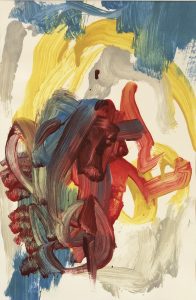
Neel Parikh is 5 years old and goes to kindergarten at Swarthmore-Rutledge School. He loves painting with his mom and playing with his cool big brother. Neel is an orange belt in karate and really good at golf.
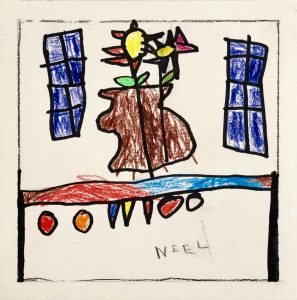
Neel Parikh is 5 years old and goes to kindergarten at Swarthmore-Rutledge School. He loves painting with his mom and playing with his cool big brother. Neel is an orange belt in karate and really good at golf.
Interview with Kathleen Krull, award winning author of books for children
By Rani Simons and Devi Simons
Kathleen Krull is an author most noted for her 60-some award-winning, compelling, well-researched and sometimes hilarious biographies for children. Ranging in subject from history to art, music to science, from athletes to pirates, she has garnered numerous awards and has captured the attention of a very young audience with her unique and entertaining style of writing non-fiction. Her works include the Women Who Broke The Rules series, the Lives of series, and the Giants of Science series. You can find out more about the author and her works at www.kathleenkrull.com.
Devi: Why do you choose to write mostly nonfiction?
Basically, I’m nosy. But I’m also intrigued by the shape and structure of a person’s life–the arc, the story of it. As stories, biographies are some of the very best–people have definite beginnings, middles, and demises. I’m motivated by the challenge of trying to write about a life in a pithy, meaningful way–sculpting with words a portrait that conveys the essence of a person–accurately yet dramatically.
Rani: You make people from a long time ago seem like they’d be fun to hang out with now. How do you make your nonfiction so fun?
To hold their own against all the competition for a child’s time, nonfiction books have to reflect something special. As with fiction, every sentence in nonfiction is there for a reason, reflecting endless choices within a structure designed to meet some challenge. For me, mixing in fictional elements would seem like cheating. Instead I try to make fresh, contemporary choices from my research–little ironies, amusing juxtapositions, concrete details, strengths and weaknesses. I use a “warts and all” approach because I want to write biographies for kids living in the real world. I know readers have to survive all kinds of hurts and traumas; my way of helping is to dramatize how people in the past have done it
Devi: After you do your research, how do you choose what to use and what not to use in the book?
I play detective, by which I mean I’m a heavy user of the library. I read mostly secondary sources and scour them for juicy details that make information come alive. I’m taking the fruits of other people’s labors, the most scholarly biographies I can find, and looking for the “good parts.” I research tons of material, gleaning a mountain of stuff I think is most interesting, and then revise, tinker, revise, edit, whittle, and then do some more revising to get what I hope is the very tiptop of the mountain. If there is a magic key to what I do, it’s this: After I soak up all the information, I don’t use it all. Being selective is the trick. Because children’s books are short, the text must get to the point so quickly that all the “boring parts” must go.
Rani: How do you decide what to write about?
I think ideas come from paying attention, listening, observing. One thing I pay attention to is what I’m passionate about. A lifelong passion for music (I grew up playing several musical instruments) inspired Lives of the Musicians: Good Times, Bad Times (and What the Neighbors Thought). The point of view in all the Lives of books comes from my fascination with neighbors– which is common, I think, though I did go to extremes and marry one of mine, Paul Brewer (editorial: who also illustrates some of her books).
Devi: We love your books about women who break the rules. Why did you decide to write about them?
As a full-time writer, I find that one of my mightiest challenges is my own city: If you’ve ever been to San Diego, you know its sunny temptations. I won’t tell you how many years it took me to get some discipline. A big help is choosing topics that are so vital to me that I don’t want to leave my desk. Probably the biggest of these is women’s history. It’s fascinating, still underreported, and more important than ever for inspiring young girls to break confining rules, to control their own lives, and to take up leadership. Wilma Unlimited came out of this interest, as did books on Pocahontas, Louisa May Alcott, and others. I consider the crown jewel of the “Lives of…” series, illustrated by Kathryn Hewitt, to be Lives of Extraordinary Women: Rulers, Rebels (and What the Neighbors Thought). I’d been angst-y during Lives of the Presidents – just one guy after another. It was a joy to write about women with real power – although the mystery deepened: Why has this country never had a woman President? I explored this question in A Woman for President: The Story of Victoria Woodhull. She was the first woman to run for the office, back in 1872, when women couldn’t even vote. Hers is a little-known story of a woman way ahead of her time. In 2008, when yet another woman tried, I proposed Hillary Rodham Clinton: Dreams Taking Flight. The country still wasn’t quite ready, but a revised edition of this book is pubbing this August. Last year, I started a new chapter book series for grades 2 to 4 called Kickass Women– wait, Bloomsbury made me change it to Women Who Broke the Rules. Judy Blume, Sacajawea, Sonia Sotomayor, and Dolley Madison, with Coretta Scott King and Mary Todd Lincoln – these are strong women who helped shape our country and refused to conform to the rules of their day. My literary inspiration was Jean Fritz, the master of this field, who uses such a light touch to keep readers turning pages. All my research was done through the fantastic San Diego Public Library and its interlibrary system that fetches books from local universities.
Rani: What were your favorite books as a kid?
Around the house we had lots of Little Golden Books and inexpensive editions of classics. The first book I can remember reading is Robert Louis Stevenson’s A Child’s Garden of Verses, beautifully illustrated by Alice and Martin Provensen. Weekly visits to the library with my mom were a highlight of childhood. I loved librarians so much I wanted to be one, but when I got a job at 15 in the library I was soon fired- for reading on the job!
Favorites included historical fiction (Laura Ingalls Wilder; Elizabeth Speare’s Calico Captive and The Witch of Blackbird Pond), biography (the Landmark Book series on people like Helen Keller, Elizabeth Blackwell, Susan B. Anthony; anything on queens), mysteries (the Famous Five series by Enid Blyton was thrilling), romance (Mary Stolz, Betty Cavanna), adventure (Scott O’Dell’s Island of the Blue Dolphins), fun books like Louise Fitzhugh’s Harriet the Spy and Astrid Lindgren’s Pippi Longstocking. Above all, fantasy– especially Edward Eager’s magical books, and Carol Kendall’s. I would have adored the Harry Potter books.
Devi: Who encouraged you to write?
My teachers in third and eighth grades (Sister de Maria and Sister Della) stand out as being particularly encouraging of my writing. Sister Della (now Marie Tollstrup) gave me an “A” on Death Waits Until After Dark, even though its plot was absurd and nasty. She was the first person who told me I might be a writer when I grew up, and she remains an important person in my life.
Rani: What was your first story?
My earliest works include A Garden Book (second grade), Hairdos and People I Know (fifth), and The History of Queersville (sixth). I created a series of weird little books about people. My first short story was “Death Waits Until After Dark” (eighth grade)–about a teacher who jumps out the window. Diaries! Very important to keep a diary or journal. I started in sixth grade, but didn’t really get the hang of it till high school.
Devi: How do you “break the rules”, and “what do your neighbors think” of you?
They know me as someone who plays my piano and my radio too loud, asks nosy questions, goes in and out of my house with huge armloads of books, plays with toys, and makes noisy splashes in my pool. I’m always sharing books with the neighbors–whether they want me to or not–so they think of me as a book person.
Rani Simons is a second grader at Germantown Friends School who enjoys writing and performing plays with her sister. Devi Simons is a third grader at Germantown Friends School who enjoys reading way past bedtime, and writing her own stories that will someday keep other kids up way past their bedtime as well.
Unwanted
By Grace Heinold
I am not good enough
I will not believe
That I am perfect just the way I am
Because the fact is
I am unwanted
I won’t listen to the people who say
It’s ok
When everything is turning on me I will remember
It’s all my fault
I can’t listen to people who think
I’m beautiful
When I look in the mirror I know
I’m worthless
I don’t have to believe
People will like me
(Now read from bottom to top.)
Grace Heinold is 12 years old and lives in Medford Lakes, NJ with her family. In her spare time she loves practicing gymnastics and cuddling her two dogs. Currently, she is a Girl Scout Cadette and is working on her Silver Award, which is focused on helping shelter dogs in need. She is also utterly obsessed with Duck Donuts. In her free time, she loves to bike around town with her friends.
My Love Story
By Tymir Childress
There was a boy named Khamir. He loved to show off, especially in front of girls. He thought girls were cute, and he didn’t have any other way of letting girls know he liked them. He was 12, but this wasn’t new for him. He had liked girls since he was 10.
One day his mom told him that he was going to go to Sky Zone. On the drive there, he was hyped! It’s been a while since he went, so it was exciting. When they got there, he ran into the line as his mom signed him up for the jump stations.
In line, he started to do flips. People around him were staring and his mom was embarrassed. He could tell because she was giggling and shaking her head. And then… he saw some girls…cute girls. They were on the trampoline. He ran right over.
He started talking to the girls and said, “Watch this!” He did multiple flips to impress the girls. The girls smiled and they were blushing a little bit. He was on his fifth flip, and he started getting tired. He was hesitating too much, and he landed on his head! Laying on the ground, his head was throbbing, and his vision was blurry. He saw his mom running toward him.
Out of nowhere, one of the girls wanted to try a flip, but she didn’t know how! Then she landed on her leg. Her parents called the hospital. When the ambulance came, Khamir and the girl were yelling at their parents because they kept asking if they were okay. Paramedics came, and they grabbed both of them and drove them to the hospital. On the way both kids were screaming and yelling from pain. When they were in the hospital, they took some meds so they wouldn’t feel the pain as much.
Then they started talking to each other, and out of thin air they started arguing. The medicine made Khamir confused. They both said some things they would regret later. Suddenly, they became quiet. Khamir realized the meds messed with his emotions, so he started to say sorry about what he said, and right then, she said sorry herself!
Finally, she formally introduced herself. She said, ”My name is Dajia.” They started to get used to each other, they told each other their hobbies, their parents names and other life details like that. After an hour they got treated and taken care of. Khamir asked Dajia out and she said yes.
So there you go, my love story.
Tymir Childress is a proud Mighty Writer.